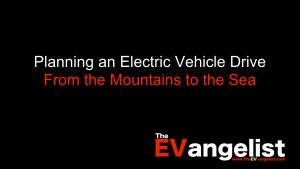Many news outlets have been reporting on the amazing change in air quality, in cities around the world, due to fewer people commuting to work, during the COVID-19 quarantine. Normally, I would be expected to cheer this development, but it’s actually having a different effect on me.
I’m uneasy and concerned.
The reason for my concern is I understand human nature, especially here in the U.S. We have very short memories. In my teens and early 20s, an oil embargo on the U.S., placed by OPEC, caused incredible hardship. There were hours-long lines at gas stations. Many gas stations sold out of gasoline, so they had red or green flags to let passersby know if they had gas or not. Fights broke out at the pumps, when people tried to cut in line. You didn’t know, as you gas gauge went down close to empty, if you’d be able to make it to work the next day. Gasoline prices went through the roof.
People dumped big gas guzzlers for more efficient (and smaller) vehicles. The first Datsun I ever rode in amazed me. It’s door panels were so thin, when compared to any vehicle I’d been in before.
Then, a few years afterward, Americans started buying large, gas guzzlers again, as if the trials of the embargoes was just a long-forgotten nightmare.
Today, the images of the change in air quality are everywhere and they’re pretty amazing:

Even in China, long considered one of the poorest areas for air quality showed an dramatic decrease in pollution levels:

Here’s my problem: I now worry that people are going to say, “Wow! Look how quickly we’ve beaten back global climate change. In just a couple months, we’ve solved it. We’ve got plenty of time to change our lifestyles to save the planet.”
Both of these images are focused on only one gas, nitrogen dioxide. What about carbon dioxide?
Then I came across an article, which (amazingly) used a term we’ve become familiar with, thanks to the pandemic, “flattening the curve,” to talk about the amount of time we have to make substantive changes to our energy sources and means of transport, to prevent the worst effects of climate change. (It seems we’ve already reacted too slowly to prevent some of the effects.)
The article uses a budget analogy, regarding released carbon, to illustrate their point. Think of it this way: You’ve decided to purchase a big ticket item but don’t want to go into debt to get it, so you decide to save for it. You want to have the item by one year from today. If you start saving part of your paycheck immediately, the amount you need to set aside from each payday is $200. If you have other items you want to buy, in the meantime, you may decide to start saving later. Let’s say you decide to start saving six months from today to procure the item. Now, you have to set aside $400 from every paycheck. It’s simple math. The longer you wait, the fewer paychecks available to contribute to your savings plan. Wait nine months to start saving and the amount to set aside becomes $800 per payday. It gets progressively worse, the more you procrastinate. Wait and you’ll suffer ever greater difficulty saving the total amount, by the desired purchase date. Finally, it will get to the point that, to get the item, you just put it on a credit card and pay high interest rates on the total amount, driving your cost up.
The same is true of the carbon budget we must sooner or later adhere to and, if we wait too long, our “credit card” is suffering through droughts, fires, more frequent and violent storm systems, starvation and eventually war.
Yes, war.
Do you really think that, after seeing how many wars have been fought over oil, that we won’t fight wars for access to food and/or water?
To flatten the climate change curve, it is in our best interest to start NOW.
RIGHT NOW.
P.S. PLEASE READ THE ARTICLE VIA THE LINK ABOVE. THE GRAPHIC EXPLAINS MUCH BETTER THAN WORDS WHAT WE’RE UP AGAINST.
TIME IS RUNNING OUT. VOTE LIKE YOUR LIFE (AND THE LIVES OF YOUR FRIENDS & FAMILY) DEPENDS ON IT!


